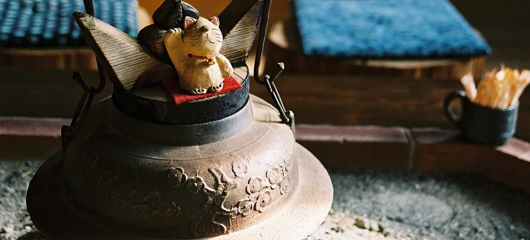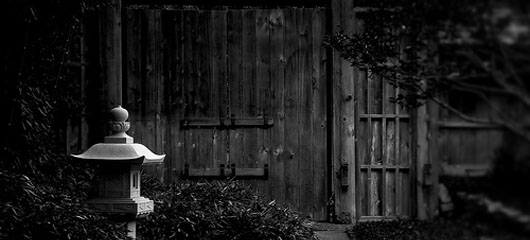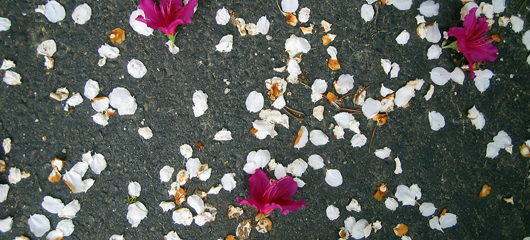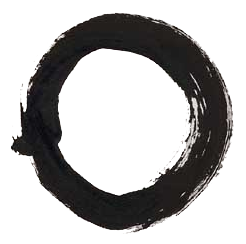Albert Einstein once said; “everything should be made as simple as possible, but not simpler.” I’ve been going on about the simple life lately, but what exactly is simplicity and why is it such a big deal?
In this series, I want to explore simplicity through the eyes of different people. Hopefully, this will enrich our ideas about simplicity and help answer those questions for both you and me.
What is Simplicity According to Zen?
Zen is a school of MahÄyÄna Buddhism that focuses on the direct experience of its teachings. In fact, its legendary founder Bodhidharma asserted that Zen is a “special transmission outside scriptures” which does “not stand upon words.”
While Zen has a lot to teach us about simplicity, I’m going to draw specifically on two aspects linked to Zen that I first learned about from the seminal book Zen and Japanese Culture by Dr. D.T. Suzuki.
Wabi – the Love of Poverty
What is wabi? Dr. Suzuki says that it translates to “aloneness”, “poverty”, or “not to be in the fashionable society of the time.” He puts that wabi “characterizes the entirety of Japanese culture reflecting the spirit of Zen.”
To be poor, that is, not to be dependent on things worldly – wealth, power and reputation – and yet to feel inwardly the presence of something of the highest value, above time and social position: this is what essentially constitutes wabi. Stated in terms of practical everyday life, wabi is to be satisfied with a little hut, a room of two or three tatami (mats), like the log cabin of Thoreau, and with a dish of vegetables picked in the neighboring fields, and perhaps to be listening to the pattering of a gentle spring rainfall.
Dr. Suzuki tells a story of Sen no Rikyū, the founder of the art of Japanese tea as it is practiced today, that helps illustrates the idea of wabi.
A teaman of Sakai owned a caddy of a special pattern entitled “Unzan Katatsuki.” As the ware was quite well known among teamen and prized by them, the owner was naturally proud of it. One day he invited RikyÅ« to tea and used this caddy. But RikyÅ« did not seem to be very much concerned about it and left the house with no comments. The owner was upset over this, and immediately broke it to pieces by striking it against the gotoku, and sighed, “What is the use these days of keeping an article not at all approved of by RikyÅ«?”
A friend of the owner’s later collected the broken pieces of the caddy and glued them together carefully so as to restore the original pattern. The work was done with a great deal of skill, and he thought the mended caddy was not after all a poor specimen. He conceived the idea of inviting RikyÅ« to tea and using the caddy again to see what RikyÅ« would say about it.
While the tea was being served, RikyÅ«’s keen eye at once detected the same old caddy now pieced together. He said, “Is this not the same caddy I saw elsewhere some time ago? When it is repaired like this, it has really turned into a piece of wabi.”

Photo by Est Bleu2007.
Sabi – Rustic Simplicity
Another aspect of Zen that is closely linked to wabi is sabi; which “consists in rustic unpretentiousness or archaic imperfection, apparent simplicity or effortlessness in execution, and richness in historical associations (which, however, may not always be present); and lastly, it contains inexplicable elements that raise the object in question to the rank of an artistic production.”
Another story of Sen no Rikyū helps us to understand sabi.
When RikyÅ« was invited to a first winter tea party somewhere, he was accompanied by his son-in-law. When they stepped into the court, they noticed the gate hung with an ancient-looking door. The son-in-law remarked that it savored highly of sabi. But RikyÅ« smiled somewhat sarcastically: “This is far from savoring of sabi, my son; it is, on the contrary, a most expensive piece of work. Look here closely. Such a door as this is not to be found in the vicinity. It must have come from a remote mountain temple far away from the human world. Think of the amount of labor to bring it here, for which the master must have paid dearly. If he had understood what genuine sabi is, he would have searched for a suitable door ready-made or made to order among the neighboring dealers, and would have had it pieced together with an old board found among his premises. Then the door fixed here would certainly savor of sabi. The taste showed before us is not a genuine one.” It was thus the son-in-law was taught the art in a practical way.

Photo by mandolux.
Simplicity is Imperfect
I take it Dr. Suzuki wasn’t suggesting that to pursue the simple life, we should all seek to be poor. Rather, he was saying that “however ‘civilized,’ however much brought up in an artificially-contrived environment, we all seem to have an innate longing for primitive simplicity, close to the natural state of living.”
We see that simplicity according to Zen – from the aspect of wabi-sabi – means a quiet appreciation of simple moments & things and that simplicity may be imperfect but not without quality.
The door which RikyÅ« criticized failed to have this quality because it had tried too hard to get it. So did the well-known tea caddy that failed at first to get RikyÅ«’s attention. But once the caddy had been broken and carefully repaired, it effortlessly embodied wabi-sabi from its being. Yet it wasn’t enough that it had been glued together and become imperfect, the care and attention that was put into its repair added a touch of rustic quality to it that so charmed RikyÅ«.
It is this sense of quality in an imperfect simplicity that is best illustrated in this last story about the tea-master Rikyū.
When RikyÅ« was still apprentice at the art of tea, his master told him to sweep the roji – the court attached to the tearoom. The roji had already been swept clean by the master himself. When RikyÅ« came out, not a speck of dust was to be found, but he at once read the master’s mind. Shaking a tree a little, he let a few leaves fall on the ground. This pleased the master.


